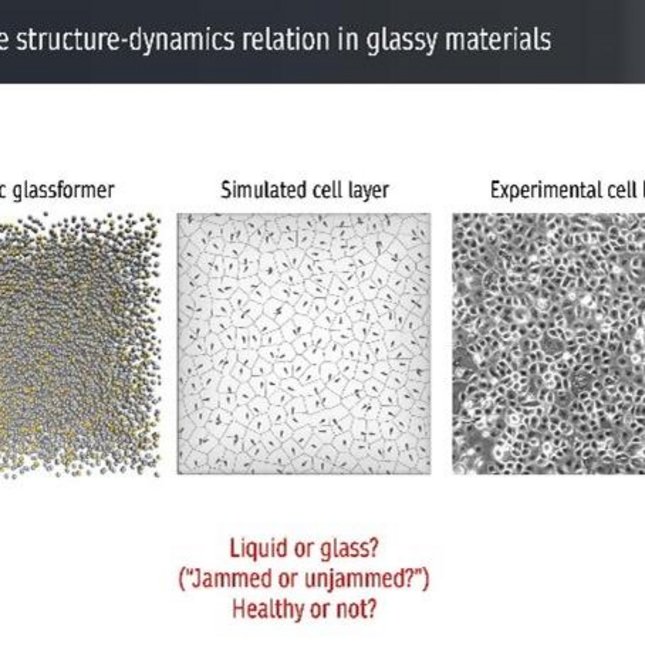On May 13th 2022, the Center for Care & Cure Technology Eindhoven (C3Te) organized their bimonthly Care & Cure Science Café webinar. of the academic year. Dr. Liesbeth Janssen is featuring this webinar. Dr. Janssen is probably, like her colleagues Prof. Menno Prins (AP) and Dr. Noortje Bax (C3Te) remembering “Het UL” the university laboratory on the Heyendaalseweg, as she also studied in Nijmegen. Liesbeth Janssen has a master in chemistry and she continued with a PhD in Theoretical Chemistry which she received cum laude in 2012. After her PhD she was awarded a Rubicon which gave her the opportunity to do a postdoc at Columbia University in New York also at the department of Chemistry in the Group of David Reichman. After this she moved to the Heinrich Heine University in Dusseldorf where she performed another postdoc this time on a Humboldt Fellow grant. In 2017 she was appointed assistant professor and PI of the Non-equilibrium Soft Matter group, which is part of the Soft Matter and Biological Physics group headed by Prof. Kees Storm at the department of Applied Physics. Since 2020, Liesbeth is a member of “De Jong Akademie” of the KNAW and in that same year, she was promoted at TU/e to associate professor. Her group focuses on the behavior of materials that are inherently out of thermodynamics equilibrium, ranging from glasses and gels to active and living materials. In her work Liesbeth combines theory, computer simulations and machine-learning methods to study the structural, dynamical, and mechanical properties of such materials.

Today Liesbeth will tell something about her favorite material glass. Dr. Janssen starts off with explaining about glass transition, that it is experimentally very well known and ubiquitous, but that it is also one of the deepest unsolved problems in theoretical physics. Glassy materials have a disordered microscopic structure that is almost identical to the structure of the fluid phase. As a material solidifies into a glass, it exhibits a spectacular slowdown of the dynamics upon cooling or compression, but at the same time undergoes only minute structural changes. Understanding the physics of glass opens a window into biology, as understanding the dynamics of glassy materials will help to understand diseases.
One of the oldest demonstrations of active-glass formation is cryopreservation of cells, which amounts to the rapid freezing of living cell tissue at cryogenic temperatures. During this process, water inside and outside the cells vitrifies into amorphous ice to effectively solidify the entire tissue, thereby “stopping biological time” and enduring the material suitable for long-term storage. Also in confluent cell layers, such as the epithelium, hallmarks of glassy physics can be clearly observed: the dynamics of cells can slow down over several orders of magnitude as the cell layer matures or densifies, effectively ‘solidifying’ the cell layer whilst maintaining a disordered cell structure. Other glassy features such as dynamical heterogeneity are also present in epithelial cell layers. However, unlike ordinary glass forming materials, the glassy dynamics of cells is also affected by the cells’ inherent activity, which renders the cellular dynamics a complex far-from-equilibrium process.

Dr. Janssen continues that there is relevance of collective cellular glassiness for pathological conditions such as asthma and cancer metastasis. The degree of glassiness also has consequences for our health! To elucidate this, statistical-physical theory of the glass transition is applied to cells in which they combine theory development, computer simulations and machine learning. As an example, Dr. Janssen’s group has studied a confluent cell model for two-dimensional epithelial layers, inspired by work of Prof. Jeffrey Fredberg and Prof. Lisa Manning on bronchial epithelial cells. This work revealed that subtle changes in the cell shape can induce a transition of the cell layer from a mobile, fluid-like state to a quiescent, glass-like state. This glass-like transition was found to occur relatively rapidly in cells from healthy donors but was significantly delayed in cells from asthmatic donors. Furthermore, the difference in glassy dynamics between healthy and asthmatic samples could be directly linked to differences in the cell shapes. This implies that from a single microscopic image of cell shapes, one could already infer important information on the cell dynamics, and thus, the pathological state of tissues. Another potentially important role of glassy dynamics lies in malignant solid tumors: the early stage of metastasis is governed by a partial ‘unjamming’ transition, in which a subset of the tumor cells becomes more mobile and escapes from the primary tumor. Ongoing work by Dr. Janssen’s group, as part of a nationwide ENW-XL research consortium, is aimed at pinpointing the first structural signatures in primary tumors that initiate this cell escape. These efforts will help to elucidate the physical mechanisms underlying the metastatic cascade, and can ultimately stimulate new, physics-informed intervention strategies for metastasis.

To close this Care and Cure Science Café webinar, Dr. Liesbeth Janssen emphasizes that glassy physics is everywhere! With employing tools from physics, a new light can be shed on the glassy behavior of living cells and tissues which will lead in the future to improved diagnostics and novel innovative anti-cancer therapies.